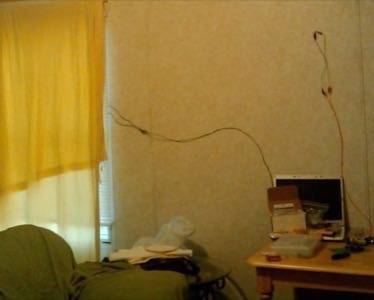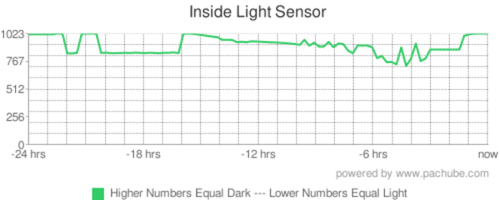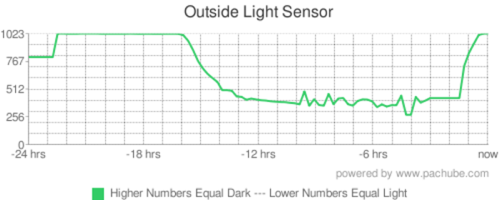Two of the more interesting products in the ‘Internet of Things,’ a.k.a. real world objects connected to the Internet, are Pachube and Arduino. We profiled Pachube (pronounced “patch-bay”) in May; it’s an open source platform enabling you to connect sensor data to the Web. Arduino is an open-source electronics prototyping platform, which we briefly profiled in February. So far both services have spawned some geeky and quirky – and in truth not overly useful – trial apps. For example Pachube has been used to monitor house plants and a recent Arduino creation monitors a teapot’s tea level. However this is not to undersell the potential of either service – it’s just that both are currently in the experimental stage.

It’s fun to look at what is being developed now, because it gives us a glimpse of the Internet of Things of the future. For example a site called The Daily Duino recently experimented with a project involving two light sensors.
Morgellon from The Daily Duino set up two light sensors in his room – one mounted on the wall and the other taped to a window (facing outside).

Morgellon explained why he did this:
“The idea is to compare inside light levels to outside light levels and adjust for energy consumption. If the light level outside is equal or greater than inside, then perhaps I should open the blinds to let in more light… or maybe even go outside… *gasp*
The two light sensors are connected to an Arduino running the Standard Firmata. The Arduino is connected to a PC running a Processing sketch that sends the sensor data to Pachube.”
This is the kind of project that Pachube encourages, as it wants users to interact with sensor data and use it to actively engage with their environment. Morgellon’s example is simple, but it illustrates the point: that web-connected sensors help him optimize his living environment. Here he is explaining the set-up, including showing his interactions with Pachube on an Android phone:
Pachube + Arduino from Morgellon on Vimeo.
Below are a couple of graphs generated from the sensor data on Pachube. The higher the number, the less light is present. The aim, according to Morgollon, is that “the Inside Light Sensor will stay a nice high number as I sleep […] while the Outside Light Sensor should lower over the course of the day.”


As the Internet of Things evolves, experiments like this show its potential. Maybe having your household lighting system hooked up to the Web for optimization and interaction is not too far away.










